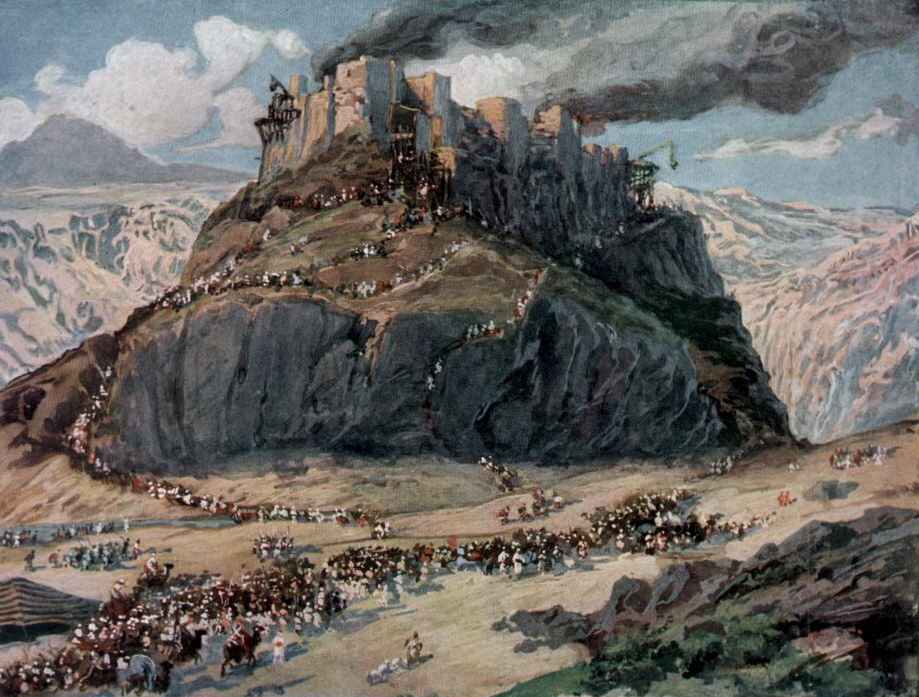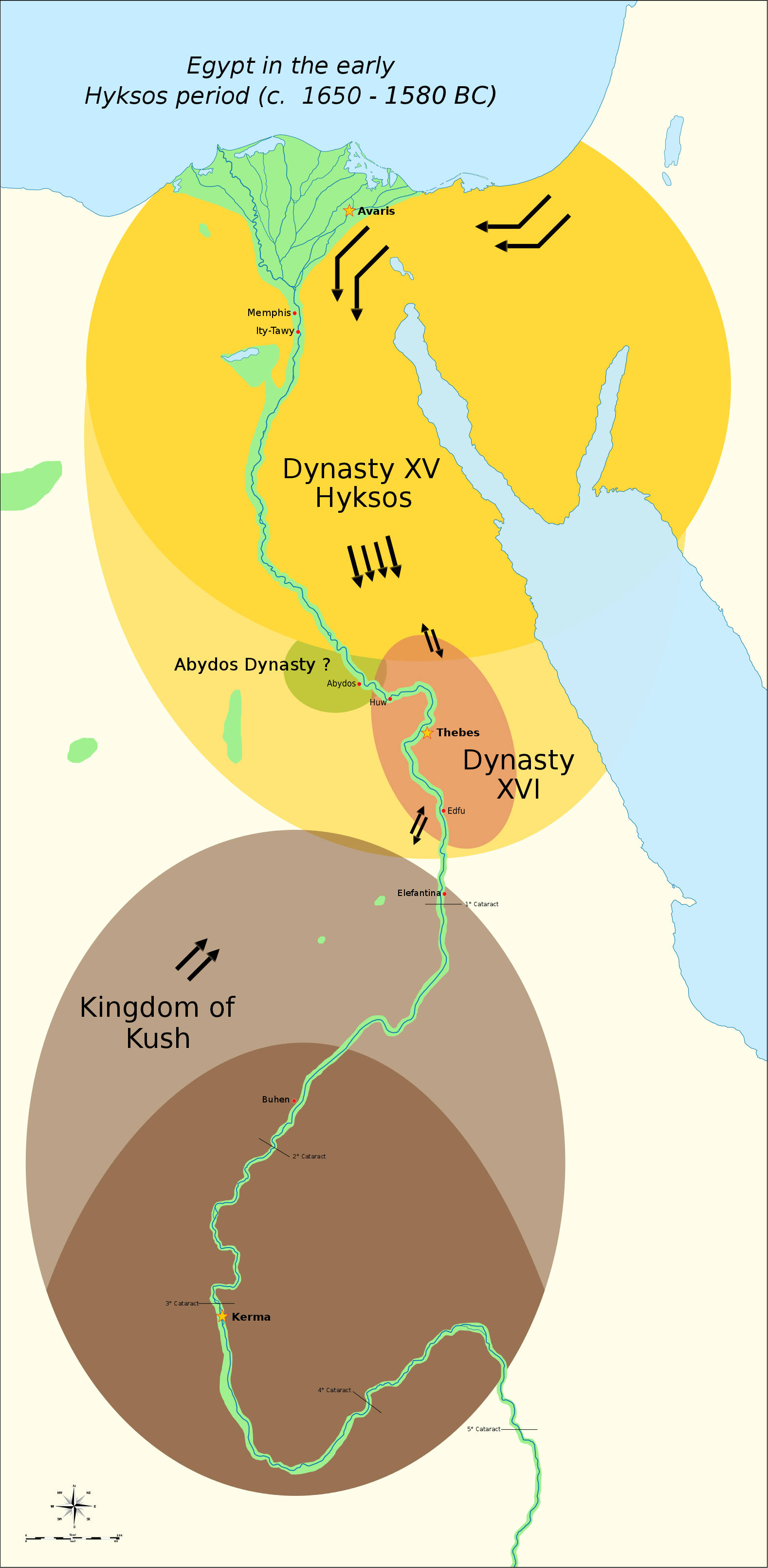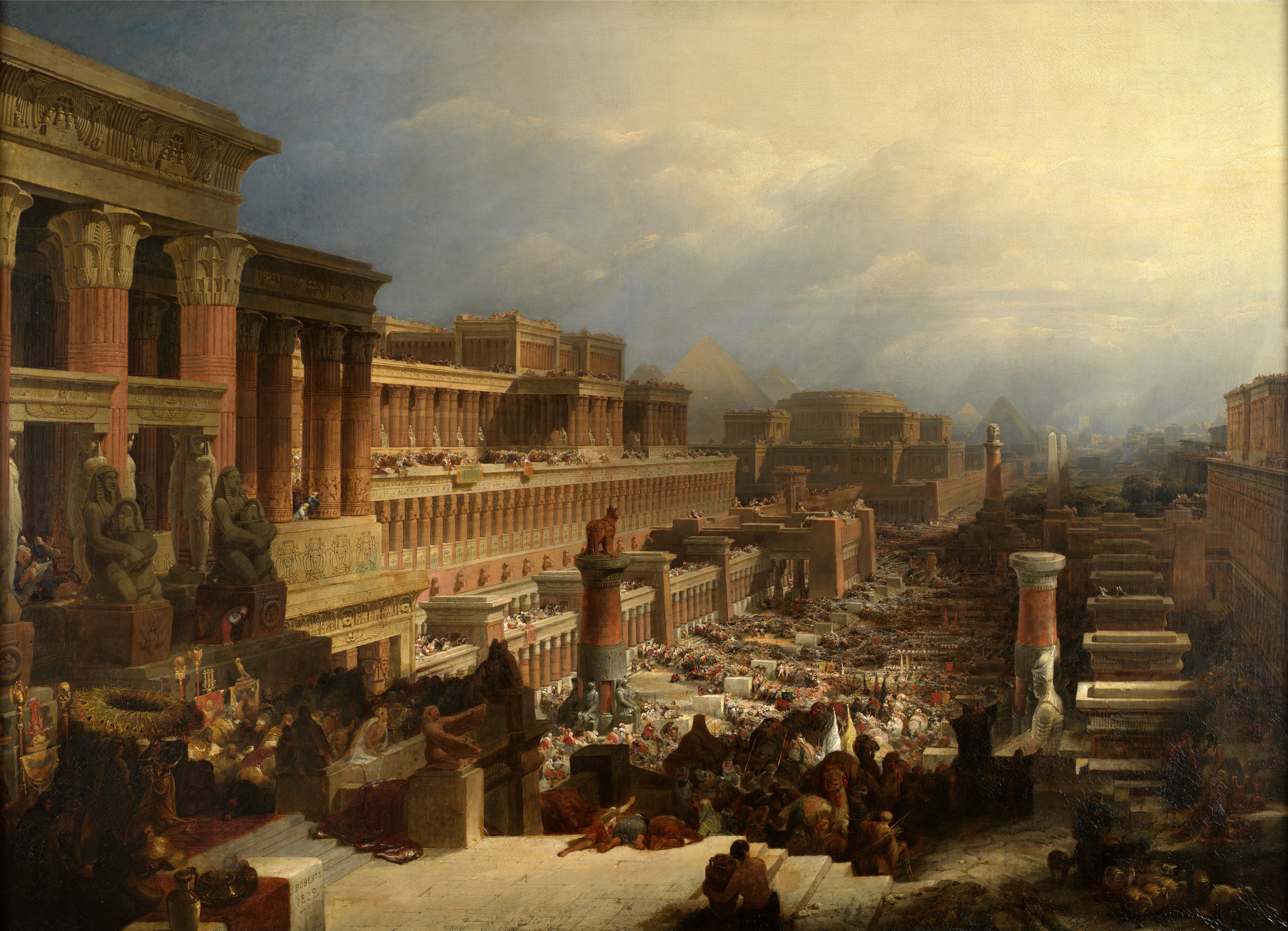|
Sihon
Sihon was an Amorite king mentioned in the Hebrew Bible, king of Ashtaroth, who refused to let the Israelites pass through his country. Chronicled in Numbers, he was defeated by Moses and the Israelites at the battle of Jahaz. He and Og were said to be the two kings Moses defeated on the east side of the Jordan river. Biblical accounts The Book of Numbers recounts that as the Israelites making their Exodus journey came to the country east of the Jordan, near Heshbon, King Siḥon of the Amorites refused to let them pass through his land: :"But Sihon would not allow Israel to pass through his territory. So Sihon gathered all his people together and went out against Israel in the wilderness, and he came to Jahaz and fought against Israel. Then Israel defeated him with the edge of the sword, and took possession of his land from the Arnon to the Jabbok, as far as the people of Ammon ..." () Moses allocated the land of Sihon, the king of Heshbon, to the Tribe of Gad in the all ... [...More Info...] [...Related Items...] OR: [Wikipedia] [Google] [Baidu] |
Heshbon
Heshbon (also Hesebon, Esebon, Esbous, Esbus; , , ''Ḥešbōn'', ) were at least two different ancient towns located east of the Jordan River in what is now the Kingdom of Jordan, historically within the territories of ancient Ammon. The Bronze Age Heshbon of biblical King Sihon has not been identified. The town of Esbus from the Roman and Byzantine period has been identified with a tell (archaeological mound) known in Arabic as ''Tell Hisban'' or ''Tell Ḥesbān''. Location of Tell Hisban The Roman and Byzantine town is believed to have been located at the ruin called Hesbân or Hisban, about southwest of Amman, and to the north of Madaba, on one of the highest summits of the mountains of Moab. A large ruined reservoir is located east of the place, and below the town there is a fountain. Biblical reference to Heshbon Ancient Heshbon was beyond, i.e. east of, the Jordan. The city was where the Israelites passed by on their entry to the Promised Land, and was assigned to t ... [...More Info...] [...Related Items...] OR: [Wikipedia] [Google] [Baidu] |
Jabbok
The Zarqa River (, ''Nahr az-Zarqāʾ'', lit. "the River of the Blue ity) is the second largest tributary of the lower Jordan River, after the Yarmouk River. It is the third largest river in the region by annual discharge and its watershed encompasses the most densely populated areas east of the Jordan River. The Zarqa rises in springs near Amman, and flows through a deep and broad valley into the Jordan, at an elevation lower. At its spring lays 'Ain Ghazal (Arabic: ), a major archaeological site that dates back to the Neolithic. Archaeological finds along the course of the river indicate the area was rich in flora and fauna in the past. The river is heavily polluted and its restoration is one of the top priorities for the Jordanian Ministry of the Environment. Geologically, the Zarqa River is about 30 million years old. It is well known for its amber deposits that date back to the Hauterivian era of the Early Cretaceous, 135 million years ago. A remarkable flora and fauna ... [...More Info...] [...Related Items...] OR: [Wikipedia] [Google] [Baidu] |
Jahaz
This is a list of places mentioned in the Bible, which do not have their own Wikipedia articles. See also the list of biblical places for locations which do have their own article. A Abana Abana, according to 2 Kings 5:12, was one of the " rivers of Damascus", along with the Pharpar river. Abdon Abdon was a Levitical city in Asher allocated to the Gershonites according to Joshua 21:30 and 1 Chronicles 6:74. Abel-Shittim Abel-Shittim, the last Israelite encampment before crossing into the Promised Land, is identified by Josephus with Abila in Peraea, probably the site of modern Tell el-Hammam in Jordan. Adam Adam was a location which, according to Joshua 3:16, was along the Jordan River, near Zarethan. According to Cheyne and Black, it may be a scribal error for "Adamah". Adadah Adadah is the name of a town mentioned in Joshua 15:22, in a list of towns inside the territory of the Tribe of Judah. The name "Adadah" appears nowhere else in the Bible."Adadah", in Accordi ... [...More Info...] [...Related Items...] OR: [Wikipedia] [Google] [Baidu] |
Amorite
The Amorites () were an ancient Northwest Semitic-speaking Bronze Age people from the Levant. Initially appearing in Sumerian records c. 2500 BC, they expanded and ruled most of the Levant, Mesopotamia and parts of Egypt from the 21st century BC to the late 17th century BC. The Amorites established several prominent city-states in various locations, such as Isin, Kurda, Larsa, Mari, and Ebla, and later founded Babylon and the Old Babylonian Empire. They also founded the Fourteenth Dynasty of Egypt during the fragmented era of the Second Intermediate Period in the Nile Delta, which was characterized by rulers bearing Amorite names such as Yakbim Sekhaenre, and were likely part of the later Hyksos. The term in Akkadian and Sumerian texts refers to the Amorites, their principal deity, and an Amorite kingdom. The Amorites are mentioned in the Hebrew Bible as inhabitants of Canaan both before and after the conquest of the land under Joshua.van Seters, John, "The Terms 'Amori ... [...More Info...] [...Related Items...] OR: [Wikipedia] [Google] [Baidu] |
Wadi Mujib
The Wadi Mujib (), also known as Arnon Stream (Hebrew: נַחַל ארנון), is a river in Jordan. The river empties into the Dead Sea circa below sea level. In ancient times, the river served as the northern boundary of the kingdom of Moab. Today, the Wadi Mujib is fed by seven tributaries. The western part of the river is the site of the Mujib Biosphere Reserve, popular for hikes & canyoning amid dramatic rock formations. Geography During the last ice age the water level of the Dead Sea reached below sea level, about higher than it is today. It flooded the lower areas of the canyons along its banks, which became bays and begun to accumulate sediments. As the climatic conditions changed, about 20,000 years ago, the water level of the lake dropped, leaving the re-emergent canyons blocked with lake marl. Most canyons managed to cut through their plugged outlets and to resume their lower courses; but Wadi Mujib abandoned its former outlet by breaking through a cleft in ... [...More Info...] [...Related Items...] OR: [Wikipedia] [Google] [Baidu] |
Ammon
Ammon (; Ammonite language, Ammonite: 𐤏𐤌𐤍 ''ʻAmān''; '; ) was an ancient Semitic languages, Semitic-speaking kingdom occupying the east of the Jordan River, between the torrent valleys of Wadi Mujib, Arnon and Jabbok, in present-day Jordan. The chief city of the country was ''Rabbah'' or ''Rabbat Ammon'', site of the modern city of Amman, Jordan's capital. Milcom and Moloch, Molech are named in the Hebrew Bible as the gods of Ammon. The people of this kingdom are called Children of Ammon or Ammonites. History The Ammonites occupied the northern Central Trans-Jordanian Plateau from the latter part of the second millennium BC to at least the second century AD. Ammon maintained its independence from the Neo-Assyrian Empire (10th to 7th centuries BC) by paying tribute to the Assyrian kings at a time when that Empire raided or conquered nearby kingdoms. The Kurkh Monolith lists the Ammonite king Baasha ben Ruhubi's army as fighting alongside Ahab of Kingdom of Israe ... [...More Info...] [...Related Items...] OR: [Wikipedia] [Google] [Baidu] |
Arnon (western Jordan)
The Wadi Mujib (), also known as Arnon Stream (Hebrew: נַחַל ארנון), is a river in Jordan. The river empties into the Dead Sea circa below sea level. In ancient times, the river served as the northern boundary of the kingdom of Moab. Today, the Wadi Mujib is fed by seven tributaries. The western part of the river is the site of the Mujib Biosphere Reserve, popular for hikes & canyoning amid dramatic rock formations. Geography During the last ice age the water level of the Dead Sea reached below sea level, about higher than it is today. It flooded the lower areas of the canyons along its banks, which became bays and begun to accumulate sediments. As the climatic conditions changed, about 20,000 years ago, the water level of the lake dropped, leaving the re-emergent canyons blocked with lake marl. Most canyons managed to cut through their plugged outlets and to resume their lower courses; but Wadi Mujib abandoned its former outlet by breaking through a cleft in ... [...More Info...] [...Related Items...] OR: [Wikipedia] [Google] [Baidu] |
Amorites
The Amorites () were an ancient Northwest Semitic languages, Northwest Semitic-speaking Bronze Age people from the Levant. Initially appearing in Sumerian records c. 2500 BC, they expanded and ruled most of the Levant, Mesopotamia and parts of Egypt from the 21st century BC to the late 17th century BC. The Amorites established several prominent city-states in various locations, such as Isin, Kurda, Larsa, Mari, Syria, Mari, and Ebla, and later founded Babylon and the Old Babylonian Empire. They also founded the Fourteenth Dynasty of Egypt during the fragmented era of the Second Intermediate Period of Egypt, Second Intermediate Period in the Nile Delta, which was characterized by rulers bearing Amorite names such as Yakbim Sekhaenre, and were likely part of the later Hyksos. The term in Akkadian and Sumerian texts refers to the Amorites, Amurru (god), their principal deity, and Amurru kingdom, an Amorite kingdom. The Amorites are mentioned in the Hebrew Bible as inhabitants of Ca ... [...More Info...] [...Related Items...] OR: [Wikipedia] [Google] [Baidu] |
Amorite Kings
The Amorites () were an ancient Northwest Semitic-speaking Bronze Age people from the Levant. Initially appearing in Sumerian records c. 2500 BC, they expanded and ruled most of the Levant, Mesopotamia and parts of Egypt from the 21st century BC to the late 17th century BC. The Amorites established several prominent city-states in various locations, such as Isin, Kurda, Larsa, Mari, and Ebla, and later founded Babylon and the Old Babylonian Empire. They also founded the Fourteenth Dynasty of Egypt during the fragmented era of the Second Intermediate Period in the Nile Delta, which was characterized by rulers bearing Amorite names such as Yakbim Sekhaenre, and were likely part of the later Hyksos. The term in Akkadian and Sumerian texts refers to the Amorites, their principal deity, and an Amorite kingdom. The Amorites are mentioned in the Hebrew Bible as inhabitants of Canaan both before and after the conquest of the land under Joshua.van Seters, John, "The Terms 'Am ... [...More Info...] [...Related Items...] OR: [Wikipedia] [Google] [Baidu] |
Transjordan (Bible)
Transjordan (, ) is an area of land in the Southern Levant lying east of the Jordan River valley. It is also alternatively called Gilead. Etymology In the Hebrew Bible, the term used to refer to the future Transjordan is (), "beyond the Jordan". This term occurs, for example, in the Book of Joshua (). It was used by people on the west side of the Jordan, including the biblical writers, to refer to the other side of the Jordan River. In the Septuagint, the is translated to . The term was translated to in the Vulgate Bible. However some authors give the , as the basis for Transjordan, which is also the modern Hebrew usage. The prefix '' trans-'' is Latin and means "across" or beyond, so "Transjordan" refers to the land ''on the other side of'' the Jordan River. The equivalent Latin term for the west side is the '' Cisjordan'' - literally, "on this side of the iverJordan". The term "East", as in "towards the sunrise", is also used in . Transjordanian tribes The Book of Numb ... [...More Info...] [...Related Items...] OR: [Wikipedia] [Google] [Baidu] |
The Exodus
The Exodus (Hebrew language, Hebrew: יציאת מצרים, ''Yəṣīʾat Mīṣrayīm'': ) is the Origin myth#Founding myth, founding myth of the Israelites whose narrative is spread over four of the five books of the Torah, Pentateuch (specifically, Book of Exodus, Exodus, Book of Leviticus, Leviticus, Book of Numbers, Numbers, and Book of Deuteronomy, Deuteronomy). The narrative of the Exodus describes a history of Egyptian bondage of the Israelites followed by their exodus from Egypt through a Crossing the Red Sea, passage in the Red Sea, in pursuit of the Promised Land under the leadership of Moses. The story of the Exodus is central in Judaism. It is recounted daily in List of Jewish prayers and blessings, Jewish prayers and celebrated in festivals such as Passover. Early Christians saw the Exodus as a typology (theology), typological prefiguration of Resurrection of Jesus, resurrection and Salvation in Christianity, salvation by Jesus. The Exodus is also recounted in the ... [...More Info...] [...Related Items...] OR: [Wikipedia] [Google] [Baidu] |
Moses
In Abrahamic religions, Moses was the Hebrews, Hebrew prophet who led the Israelites out of slavery in the The Exodus, Exodus from ancient Egypt, Egypt. He is considered the most important Prophets in Judaism, prophet in Judaism and Samaritanism, and one of the most important prophets in Christianity, Prophets and messengers in Islam, Islam, the Manifestation of God (Baháʼí Faith)#Known messengers, Baháʼí Faith, and Table of prophets of Abrahamic religions, other Abrahamic religions. According to both the Bible and the Quran, God in Abrahamic religions, God dictated the Mosaic Law to Moses, which he Mosaic authorship, wrote down in the five books of the Torah. According to the Book of Exodus, Moses was born in a period when his people, the Israelites, who were an slavery, enslaved minority, were increasing in population; consequently, the Pharaohs in the Bible#In the Book of Exodus, Egyptian Pharaoh was worried that they might ally themselves with New Kingdom of Egypt, Eg ... [...More Info...] [...Related Items...] OR: [Wikipedia] [Google] [Baidu] |







